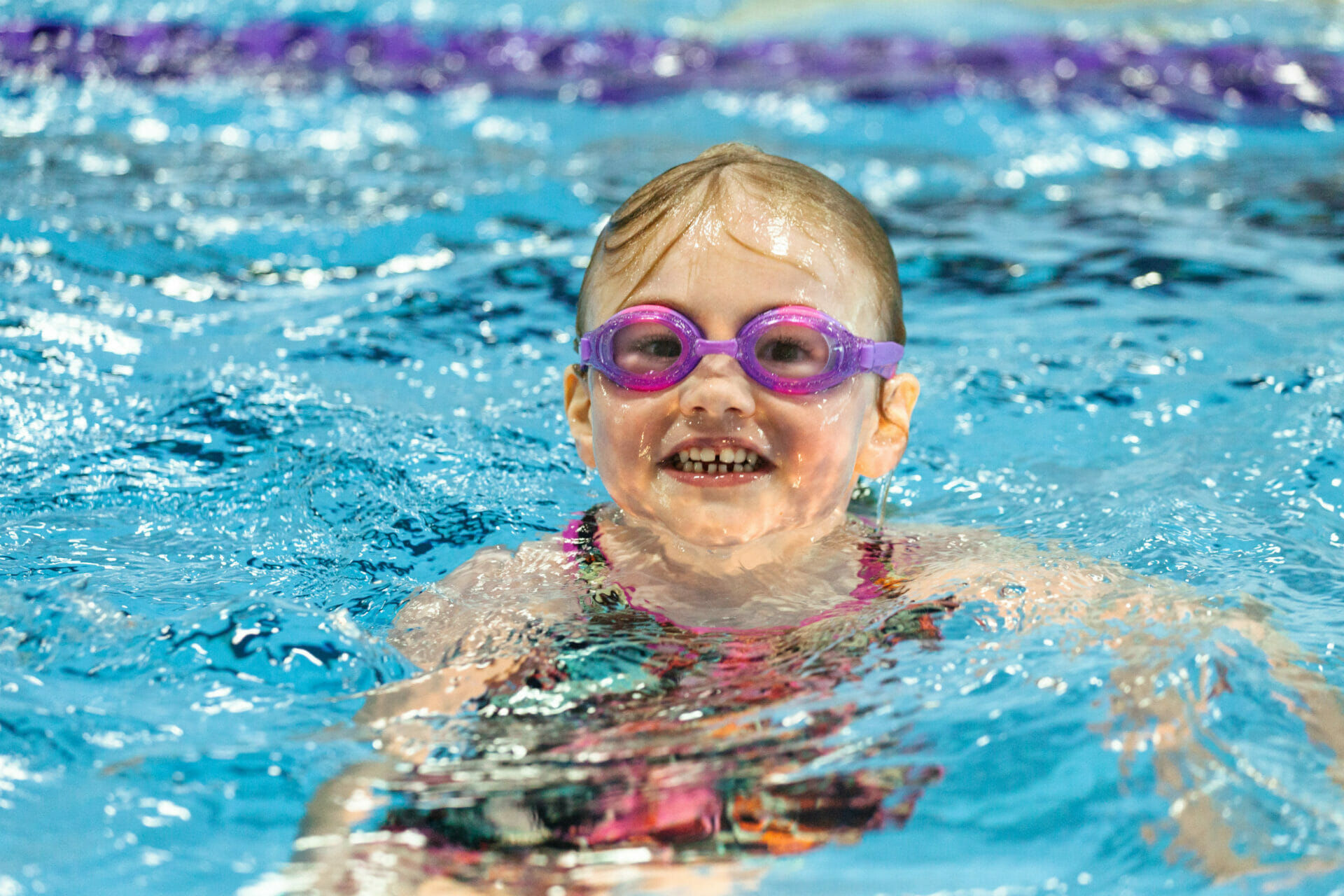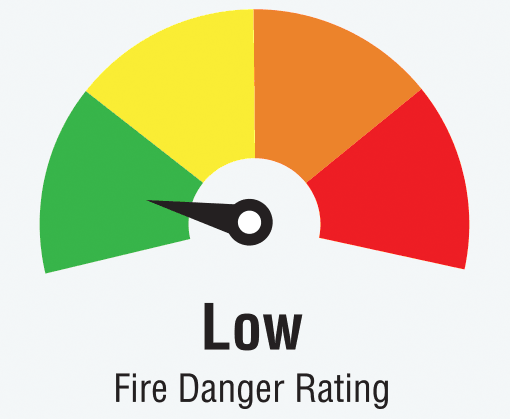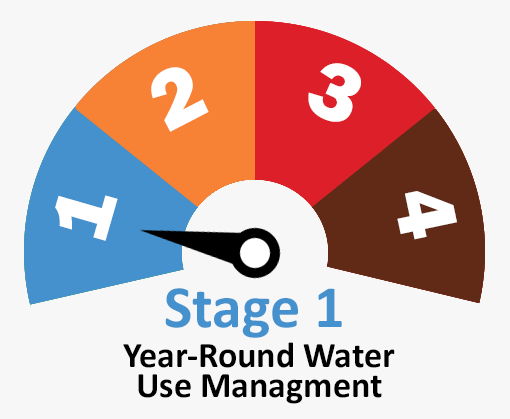
Click for registration Information
New for 2025: swim lesson prerequisite/level checks
To ensure each child is placed in the correct swim level, our registration system automatically checks all necessary prerequisites are met*. We want every child to start their swimming journey with the confidence and skills they need to set them up for lesson success.
Placing children in the correct swim level enhances their learning experience and benefits all participants. Each level builds on previously learned skills, maximizing success for everyone in the lesson.
Parents can conveniently check the status of their child’s prerequisites through the “Activity Outcomes” tab in their family profile. This way, you can stay informed and prepared for registration day.
Swimming lessons are still subject to age prerequisites.
If you’re new to the community and want to enroll your child in swimming lessons, we invite you to visit the Meadow Park Sports Centre Pool for a complimentary swim assessment (details below). Once completed, we’ll update your profile with the assessment results, allowing you to register for the appropriate level on registration day. You can also present a copy of your latest report card, and we can enter the result as your prerequisite. We request all assessments are completed one week before registration day to allow time for processing.
*Each child has to have their past lesson outcome recorded in the system (Xplor) to be able to register.
Free swim lesson assessments!
Make sure you know your child’s correct level to make registration day as smooth as possible. Ensure your child is appropriately challenged and learning something new while still having fun with their peers.
Reasons for an assessment can include a long layoff from lessons, moving from another community with a different lesson program, or spending lots of time swimming on a recent vacation.
Simply show up at MPSC during operating hours, let the front desk know you are there for assessment and they will let you in for free*. Speak to any lifeguard and they will assist with the assessment**.
*If you want to swim after the assessment regular drop-in fees apply.
**Lifeguards do not enter the water for an assessment, if your child is under the age of 7 they need to be accompanied by someone 16 years of age or older in swimwear in the water.
Lifesaving Society Swim For Life
The Red Cross of Canada has ceased offering water safety programming to focus resources on worldwide humanitarian efforts. The Resort Municipality of Whistler has joined the vast majority of British Columbia swim lesson providers to transition to the nationally recognized Lifesaving Society Swim For Life curriculum beginning in January 2023. Details of the new program are available below.
In which level do I register my child?
If your child is 3 years old and has never taken a lesson before, they should register in Preschool 1 – Octopus. If you are unsure which Swim For Life lesson your child should attend, consult your previous Red Cross course history, and use the Red Cross to Swim For Life Transfer Chart on this page to find your new level. Alternatively, read the level descriptions listed towards the bottom of this page. If you are still unsure, come in for an assessment during pool operating hours. For more information contact MPSC front desk at 604 935-PLAY (7529).
How to register
View upcoming registration dates/times and get prepared for registration day by visiting whistler.ca/register. Browse the program levels below to view available programs.
- Online
- By Phone at 604-935-PLAY (7529) extension 0, during operating hours
Waitlists
If the class that you would like to register for is full, please add your child to the waitlist through the Xplore recreation registration software. If a space opens up, we will contact you by email. We will also try to accommodate creating new lessons for waitlists, dependant on instructor availability, pool space and other considerations.
Facility use before and after programs
Program participants are permitted to use the MPSC facility before or after their program classes. Parents accompanying their children must pay admission.
Change rooms and showers:
- Change rooms and shower facilities are available.
- Please shower prior to entering the pool area.
- Secure your belongings in our complimentary lockers.
General Guidelines for use:
- Stay home if you are sick
- Practice good hand hygiene
- Respect personal space; consider other people’s situations and different comfort levels
- Follow all guidelines and abide by the posted Code of Conduct
- All patrons must shower before entering the pool area
- Life jackets are available upon request
- Pool-specific supervision policy: Children under 7 years of age must be within arm’s reach of an adult (16 years+) who is also in the water wearing swimwear, to a maximum ratio of one adult to three children. Accompanying adults must pay admission.
- Facility-wide supervision policy: Children under 10 years of age must be accompanied by a responsible adult (ages 16+) whilst in our facility. View the full facility supervision policy.
- Guests with accessibility considerations are asked to contact MPSC Front Desk so we can accommodate your needs in an effective and safe manner
Swim For Life parent and tot swim lessons
The Lifesaving Society Parent & Tot program structures in-water interaction between parent and
child to stress the importance of play in developing water-positive attitudes and skills. Activities and
progressions are based on child development, so parents register in the level appropriate for their
child’s age. Targeted Water Smart® drowning prevention messages are an integral part of the
Swim for Life® program. These messages are delivered in all Parent & Tot levels.
- Orientation to water for babies and their parent/caregiver
- To enter this level, babies must be able to hold their head up.
- The goals are to help babies experience buoyancy and movement through songs and play in the water and to teach the parent/caregiver age-specific water safety.
- This level is participation-based only, without formal evaluation.
- Orientation to water for toddlers and their parent/caregiver.
- Age is the only condition for entering this level.
- Swimmers learn how to use floating objects for support and explore different water movements through games, songs and active water play.
- The parent/caregiver also learns age-specific water safety.
- This level is participation-based only, without formal evaluation.
- Orientation to water for toddlers and their parent/caregiver.
- Age is the only condition for entering this level.
- Swimmers learn, through fun games and songs, how to combine skills, how to kick with a buoyant object and how to perform basic floats, glides and kicks.
- This level is participation-based only, without formal evaluation.
Swim For Life preschool swim lessons (4 to 5 years)
The Lifesaving Society Preschool program gives children a head start on learning to swim. Preschool programs develop an appreciation and healthy respect for the water before these kids get in too deep. In our five basic aquatic progressions we work to ensure 3 to 5-year-olds become comfortable in the water and have fun developing a foundation of water skills. Targeted Water Smart® drowning prevention messages are an integral part of the Swim for Life® program. These messages are delivered in all Preschool levels.
We encourage the parent to participate until their child lets them know they can do it themselves. These preschoolers will have fun learning to get in and out of the water. We’ll help them jump into chest deep water. They’ll float and glide on their front and back, and learn to get their face wet and blow bubbles underwater.
These preschoolers learn to jump into chest deep water by themselves and get in and get out wearing a lifejacket. They’ll submerge and exhale underwater. While wearing a lifejacket they’ll glide on their front and back.
These youngsters will try both jumping and a sideways entry into deep water while wearing a lifejacket. They’ll recover objects from the bottom in waist-deep water. They’ll work on kicking and gliding through the water on their front and back.
Advanced preschoolers will learn to do solo jumps into deeper water and get out by themselves. They’ll do sideways entries and open their eyes underwater. They’ll master a short (5 m) swim on their front wearing a lifejacket and gliding and kicking on their side.
These youngsters get more adventuresome with a forward roll entry wearing a lifejacket and treading water for 10 sec. They’ll work on front and back crawl swims for 5 m, interval training and get a giggle out of whip kick.
Swim For Life school-aged swim lessons (6 to 12 years)
The Lifesaving Society Swimmer program makes sure children learn how to swim before they get in too deep. Progressions accommodate 6 to 12-year-olds including beginners and swimmers who want to build on the basics. Lots of in-water practice develops solid swimming strokes and skills. Targeted Water Smart® drowning prevention messages are an integral part of the Swim for Life® program. These messages are delivered in all Swimmer levels.
These beginners will become comfortable jumping into water with and without a lifejacket. They’ll learn to open their eyes, exhale and hold their breath underwater. They’ll work on floats, glides and kicking through the water on their front and back.
These advanced beginners will jump into deeper water and learn to be comfortable falling sideways into the water wearing a lifejacket. They will be able to support themselves at the surface without an aid, learn whip kick, swim 10 m on their front and back, and be introduced to flutter kick interval training (4 x 5 m).
These junior swimmers will dive, do handstands, and front somersaults in the water. They will work on 15 m of front crawl, back crawl and 10 m of whip kick. Flutter kick interval training increases to 4 x 15 m.
These intermediate swimmers will swim 5 m underwater and then lengths of front, back crawl, whip kick, and breaststroke arms while breathing. Their new bag of tricks includes the completion of the Canadian Swim to Survive Standard. They will cap it all off with front crawl sprints over 25 m and 4 x 25 m front or back crawl interval training.
These swimmers will master shallow dives, cannonball entries, eggbeater kicks, and in-water backward somersaults. They will refine their front crawl and back crawl over 50 m swims of each, and breaststroke over 25 m. Then they will pick up the pace in 25 m sprints and two interval training bouts: 4 x SO m front or back crawl; and 4 x 15 m breaststroke.
These advanced swimmers will rise to the challenge of sophisticated aquatic skills including stride entries, compact jumps, and lifesaving kicks such as eggbeater and scissor kick. They will develop strength and power in head-up breaststroke sprints over 25 m. They can now easily swim lengths of front crawl, back crawl, and breaststroke, and will accomplish the 300 m workout.
Swimmers continue stroke development with 50 m swims of front crawl, back crawl and breaststroke. Lifesaving sport skills include a 25 m obstacle swim and 15 m object carry. First aid focuses on assessment of conscious victims, contacting EMS, and treatment for bleeding. Fitness improves in 350 m workouts and 100 m timed swims.
Swimmers develop better strokes over 75 m swims of each stroke. They tackle lifesaving sport skills in a lifesaving medley, timed object support and rescue with a buoyant aid. First aid focuses on assessment of unconscious victims, treatment of victims in shock and obstructed airway procedures. Skill drills develop a strong lifesaving foundation.
Swimmers are challenged with 600 m workouts, 300 m timed swims and a 25 m object carry. Strokes are refined over 100 m swims. First aid focuses on treatment of bone or joint injuries and respiratory emergencies including asthma and allergic reactions. Lifesaving skills include defence methods, victim removals and rolling over and supporting a victim face up in shallow water.
Swim For Life adult swim lessons (ages 16+)
The Adult Swimmer program is for beginners who may be just starting out or swimmers who just want help with their strokes. Within the Adult Swimmer curriculum, participants set their own goals to develop water confidence and smooth recognizable strokes. Targeted Water Smart® drowning prevention messages are an integral part of the Swim for Life® program. These messages are delivered in all Adult Swimmer levels. Instructors should be prepared to adapt these items and awards to accommodate the needs of adult learners and provide the flexibility for them to select the skills they want to learn to achieve their personal swimming goals.
You’ll work towards a 10-15 m swim on your front and back. You’ll do jump entries from the side and recover an object from the bottom in chest-deep water. Improve your fitness and your flutter kick with 4 x 9-12 m interval training.
Kick it up a notch working on two interval training workouts of 4 x 25 m kicking and front or back crawl. You’ll be able to perform dive entries and demonstrate breaststroke arms and breathing over 10-15 m. You’ll be supporting yourself at the surface for 1-2 minutes, and showing off your handstands in shallow water.
No sweat (or at least none anyone can see). You’ll learn eggbeater, stride entries and compact jumps. You’ll be doing a 300 m workout and sprinting 25-50 m. You’ll master your front crawl, back crawl and breaststroke. Whew!


